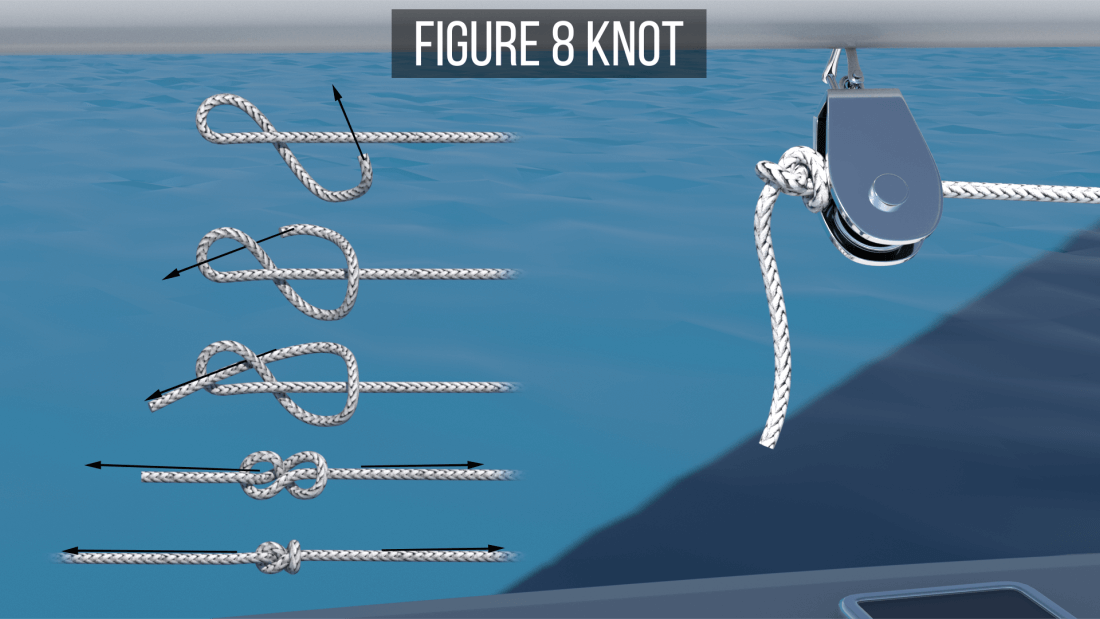6 Essential Boating Knots and their uses for sailors

There are five basic knots that every boater should know. All knots used by boaters are designed to be easy to tie, take a tremendous amount of strain and then be easy to untie. You should practice these knots until you can tie them without thinking about it.
The 6 most commonly used knots in boating are:
- Reef knot (Square knot)
- Bowline knot
- Cleat Hitch knot
- Round turn and two haft hitches knot
- Clove Hitch knot
- Figure 8 knot
Reef knot (Square knot)
Where did the reef knot come from?
The origins of the reef knot can be traced back over 4,000 years, when it was commonly employed to reduce the surface area of sails in order to withstand power when the wind is strong.
What is a reef knot?
The reef knot is a combination of two half knots, with one tied on top of the other. What makes the reef knot truly special is its ability to be tied and tightened from either end.
Is it possible for a reef knot to become untied?
If you happen to pull one of the protruding ends back along the opposite body, be prepared for this knot to come undone quickly.
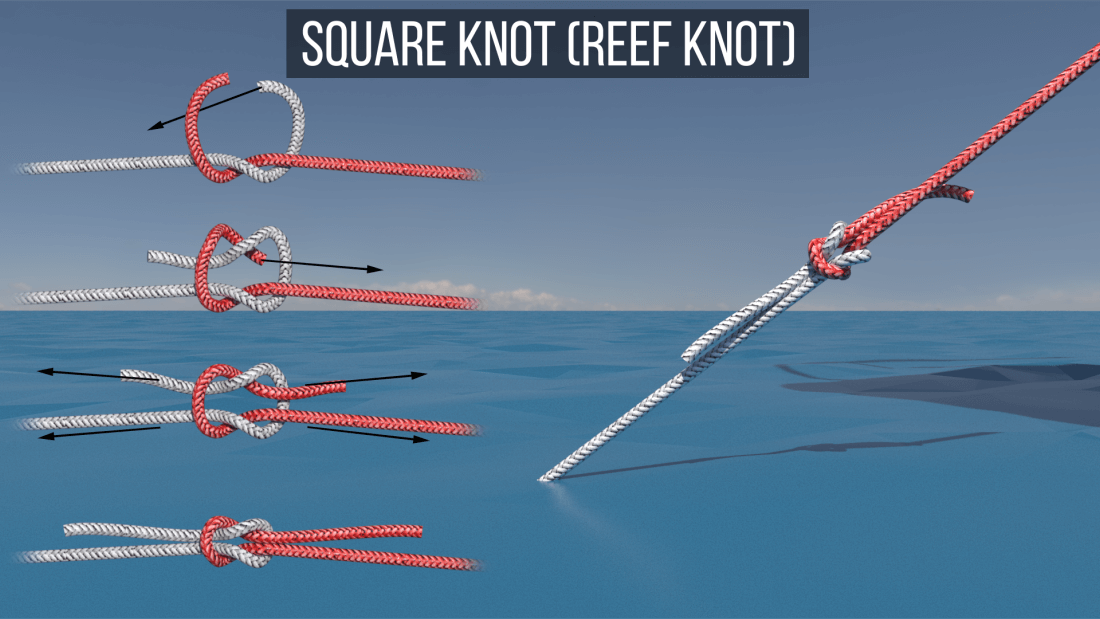
Bowline knot
What is the purpose of a bowline knot?
Also called the "king" of knots, the bowline is the best knot for boating. The big advantage it has over other knots one might use to put a loop in the end of a line is that it's very easy to un-do. It is used to form a temporary loop in a line that can then be put over a piling or cleat. It can also be used to attach a line to an eye. This knot won’t slip or jam.
How do you tie a bowline knot?
Start by making an overhand loop which looks like a six (see first figure). With the end of the line, come up through the hole in the six, around the back of the line you’re holding and back down through the hole in the six. Grab the part of the line that went up through the hole and the part of the line that came back down through the hole in one hand, and also the top of the line you were holding in the other, and pull.
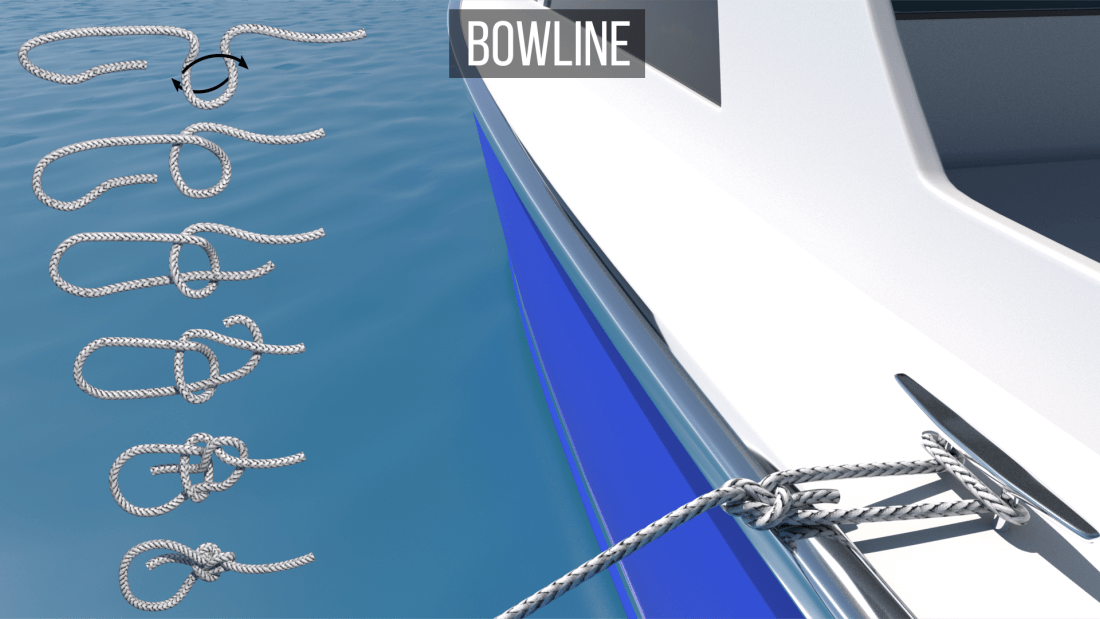
Cleat Hitch knot
What is the purpose of a cleat hitch knot?
Cleat hitch knots are used to secure vessels to docks.
How do you tie a cleat hitch knot?
Take the line to the ear of the cleat furthest from where the line comes from (the load). Take one wrap around the base of the cleat and then start a figure eight across the top of the opposite ear. Finish with a half hitch turned under so that the line is coming away from the cleat in the opposite direction from which it came in.
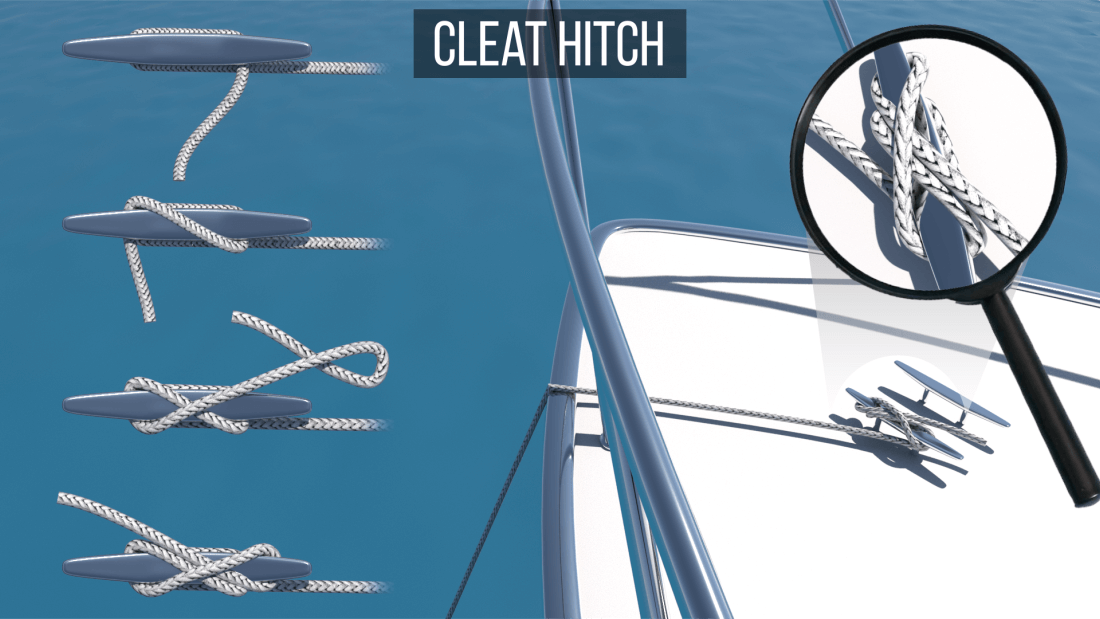
Round turn and two half hitches knot
What is the purpose of a round turn and two haft hitches knot?
The round turn and two half hitches knot serves as a reliable method for securing mooring lines in place. Used to permanently tie to a piling, mooring or ring.
How do you tie a round turn?
Simply take a full turn around the object being tied to and take two half hitches around the line itself. Over and up through and under and down through.

Clove Hitch knot
What is the purpose of a Clove hitch knot?
Used to temporarily tie to a piling, this knot can come loose. You may add a couple of half hitches as above to make it more permanent. This knot is simply two loops with an end tucked under.
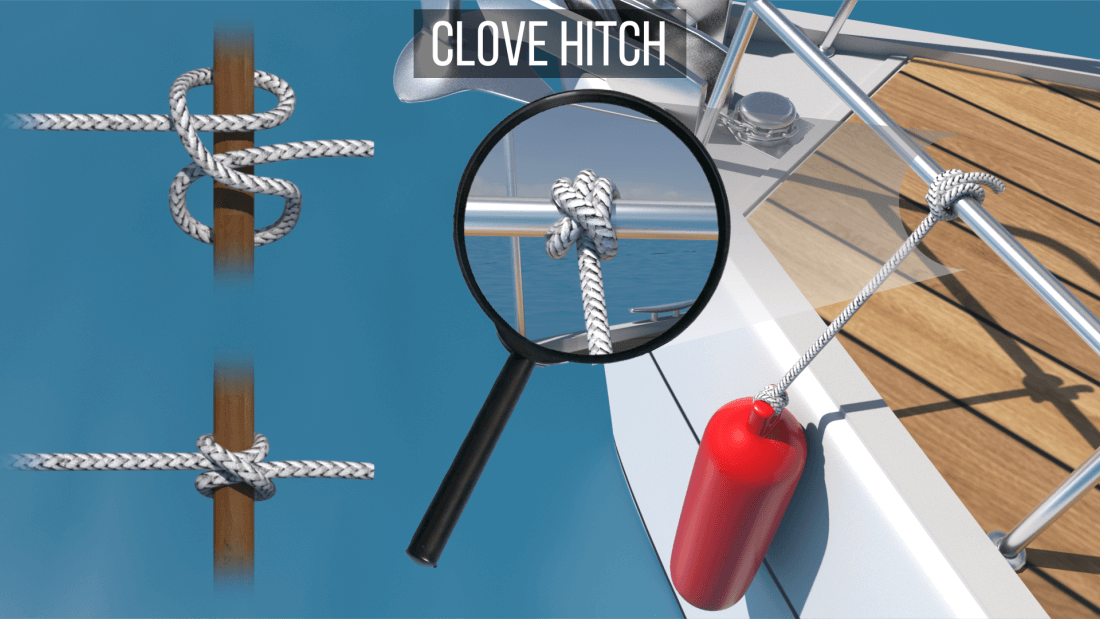
Figure 8 knot
What is the purpose of an 8 knot?
This knot secures your rope in place by preventing the tag end of the rope from slipping out of most retaining devices.
What are the advantages of the figure 8 knot?
The figure 8 knot is a durable and non-slip knot. An essential knot to keep your line from slipping away unnoticed.
This knot can be untied easily.
